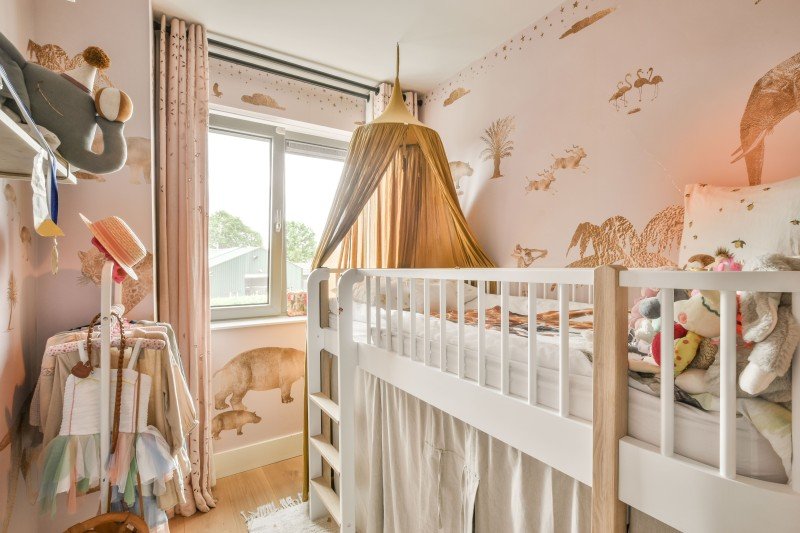Bunks: The Versatile Space-Saving Solution for Modern Living
In today's fast-paced world, where city living areas are diminishing and the demand for versatility and usefulness is increasing, bunks have actually emerged as a popular solution. Bunks are not simply a type of bed; they represent an advanced approach to making the most of space, promoting social interaction, and providing comfortable sleeping arrangements. This post will explore the different kinds of bunks readily available, their benefits, and how they can transform both little and big home.
Understanding Bunks: What Are They?
Bunks, commonly referred to as bunk beds, are two or more beds stacked on top of each other. They are developed to conserve floor space, making them ideal for children's spaces, hostels, and even adult living situations. Bunk beds are readily available in various designs and setups, from traditional models to contemporary, designer analyses.
Types of Bunks
| Type of Bunk | Description |
|---|---|
| Twin-over-Twin | 2 twin beds stacked on top of each other. Suitable for kids sharing a room. |
| Twin-over-Full | A twin bed on top and a bigger complete bed on the bottom. Great for accommodating visitors. |
| Full-over-Full | 2 full-sized beds stacked together. Perfect for older kids or adults. |
| L-Shaped Bunk Bed | Beds are organized in an L shape, permitting a corner positioning and added space beneath. |
| Loft Beds | Only the leading bunk exists, leaving room for a desk, couch, or storage beneath. |
| Triple Bunk Beds | 3 beds stacked vertically, excellent for optimizing vertical space. |
Benefits of Using Bunks
- Space Efficiency: Bunks are created to make use of vertical space, making them perfect for little bed rooms or apartment or condos where floor space is limited.
- Cost-Effective: Investing in a bunk bed can be more affordable than purchasing numerous different beds, particularly for growing households or those with regular visitors.
- Versatile Designs: Many bunks come with add-ons, such as desks, storage drawers, or futons, enabling for versatile use of the area.
- Social Interaction: Bunk beds invite camaraderie amongst brother or sisters and good friends, promoting a sense of connection.
- Creative Use of Space: Bunk beds encourage imagination in room design, enabling spirited themes and vibrant decoration that can make a bed room feel special and welcoming.
Practical Considerations
- Height Limitations: When picking a bunk bed, it is essential to consider the height of the ceiling in the room. Measure the space to guarantee there is sufficient clearance above the top bunk for safety and convenience.
- Weight Restrictions: Each bunk has a particular weight limitation. Parents need to assess the weight of those using it, particularly when it comes to adults or much heavier adolescents sharing the bed.
- Safety Features: Features such as guardrails, tough ladders, and security certifications are important for guaranteeing the bunk bed's safety, especially for younger users.
Bunks for Various Living Situations
Household Homes
In household homes, bunks offer a useful option for siblings sharing a space or accommodating pajama parties. Bunk beds can be stylishly incorporated into a kid's space while supplying adequate space for play.
Hostels and Vacation Rentals
For hostels and vacation rentals, bunk beds maximize sleeping arrangements without jeopardizing convenience. Such setups provide a cost-effective method to accommodate a larger number of visitors.
College Dormitories
In college dorms, bunks assist take advantage of the limited square video readily available, allowing for more room to mingle and study.
Little Apartments
In little city apartments, lofted bunk beds produce additional space for living locations, work areas, or storage, making life more manageable in compact environments.
Upkeep and Care of Bunks
Preserving a bunk bed is essential for guaranteeing its longevity. Here are a few suggestions:
- Regular Inspections: Check for any loose screws or bolts and tighten them as required.
- Tidiness: Dust and tidy the bunks frequently to prevent allergens and guarantee a tidy sleeping environment.
- Bed mattress Care: Use a quality mattress protector to maintain health and extend the life of the bed mattress.
- Age Appropriateness: Upgrade to a bigger, more tough bunk as kids grow or when the present plan no longer fulfills the needs of its occupants.
Often Asked Questions (FAQs)
1. Are bunk beds safe for kids?
Yes, bunk beds can be safe for children if they are built with security functions like guardrails and a steady ladder. Always monitor more youthful kids when they are using bunk beds.
2. What age is suitable for a child to sleep on the leading bunk?
A lot of producers suggest that children under the age of six must not sleep on the upper bunk due to security concerns.
3. How much weight can bunk beds typically hold?
Weight capacities vary based on the design and products but normally range from 200 to 400 pounds. Always examine the maker's guidelines.
4. Can bunk beds be separated into 2 single beds?
Many bunk beds are developed to be convertible, permitting them to be separated into two specific beds. It's necessary to check the product requirements before purchasing.
5. What type of bed mattress is best for a bunk bed?
A medium-firm bed mattress is frequently suggested as it provides appropriate support without being too heavy or soft, which can posture safety issues.
Bunks are more than just beds. They are innovative space-saving options that accommodate the requirements of modern living. With various styles readily available, they offer comfort and performance for families, guests, and people alike. By focusing on Deon Skimehorn and maintenance, owners can make sure that their bunk beds end up being a treasured part of their home for several years to come. Whether for spirited children or accommodating visitors, bunk beds provide a trendy and practical option to the difficulty of limited space.

